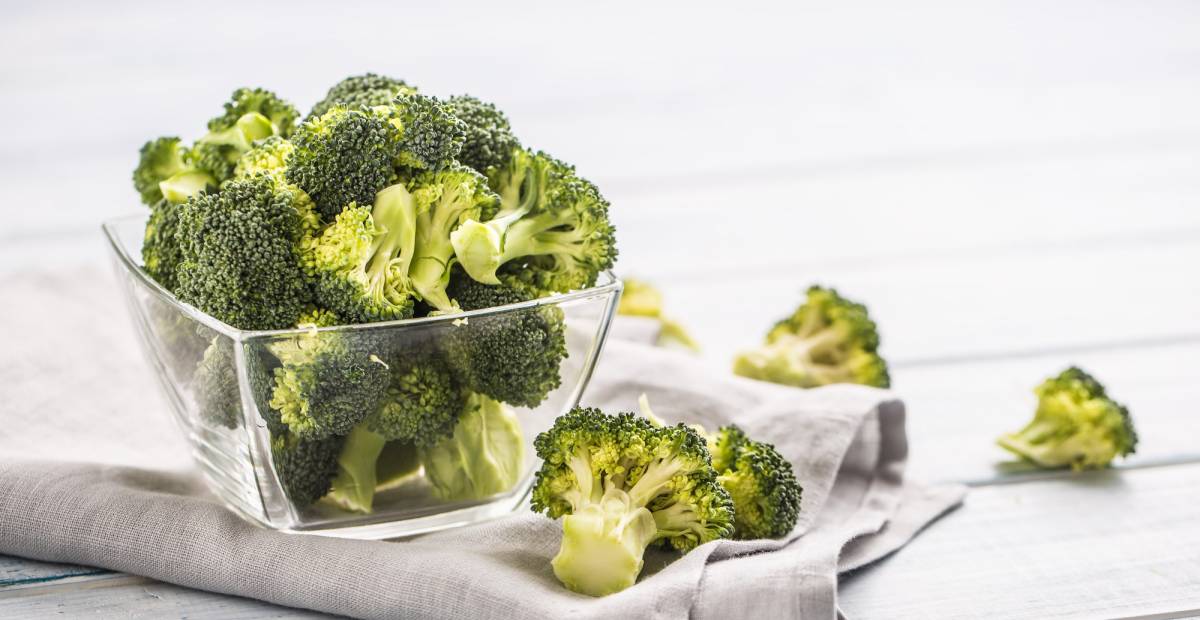Daily Habits to Maximise Broccoli's Detox Benefits

Without proper sleep, hydration, and dietary fiber, the benefits of broccoli antioxidants may not reach their full potential. Simple daily routines like maintaining fluid intake, ensuring regular sleep cycles, and increasing broccoli fiber can significantly improve detox efficiency. In fact, research suggests that these lifestyle factors can influence how your body processes oxidative stress and eliminates toxins via Phase II enzymes like GST and UGT. This article outlines specific, evidence-based habits that help maximize the physiological benefits of consuming broccoli for detoxification.
Get Enough Quality Sleep to Turbo-Charge Broccoli Antioxidants
Multiple studies confirm that the antioxidant compounds in broccoli, particularly sulforaphane and its precursor glucoraphanin, require cellular recovery periods—such as those achieved during sleep—for optimal activity [source]. Nighttime rest enhances the function of endogenous antioxidant systems, including glutathione peroxidase and superoxide dismutase, both of which are upregulated by sulforaphane via the Nrf2 pathway. This biochemical pathway plays a central role in Phase II detoxification by activating enzymes that neutralise reactive oxygen species and environmental toxins.
Without consistent sleep, the detox benefits of eating broccoli everyday may be diminished. Sleep deprivation disrupts circadian-controlled gene expression, including detoxification genes such as GSTM1, UGT1A1, and NQO1—many of which are also targeted by broccoli antioxidants [source]. Sleep is not simply rest; it is a metabolic window that allows broccoli-derived phytochemicals to exert their effects on liver function, cellular defense, and systemic inflammation.
For maximum benefit, maintain a regular sleep schedule of 7–9 hours per night. Avoid stimulants in the evening, keep bedroom temperatures cool, and dim artificial light at least an hour before bedtime. These changes not only support sleep quality but enhance the body's ability to utilise sulforaphane and other antioxidants found in cruciferous vegetables.
Stay Hydrated the Smart Way — Broccoli Water & Beyond
Hydration plays a crucial role in detoxification. Without sufficient water intake, the body’s ability to transport and excrete toxins—including those mobilized by broccoli antioxidants—is significantly impaired. Broccoli-derived compounds such as sulforaphane are known to activate Phase II detox enzymes like UDP-glucuronosyltransferase (UGT) and glutathione S-transferase (GST), both of which rely on adequate fluid balance to support the elimination of conjugated toxins through bile and urine [source].
A study published in Nutrients confirmed that dehydration decreases hepatic clearance efficiency and impairs the antioxidant defense network—reducing the bioefficacy of compounds like glucoraphanin and its active metabolite sulforaphane [source]. Therefore, for individuals eating broccoli everyday for detox support, maintaining optimal hydration is a non-negotiable habit.
To support this, a simple way to enhance both hydration and bioactive intake is broccoli infused water. While no clinical trial has validated this preparation method for sulforaphane delivery, cold-infused broccoli water may offer trace phytonutrients and improve palatability. Use raw, lightly chopped florets soaked in cold filtered water for 6–8 hours in the refrigerator. Consume the water within 24 hours. This can be an additional tool to reinforce fluid intake, especially in individuals with low vegetable consumption.
It is also advisable to maintain consistent hydration across the day rather than consuming large volumes at once. Distribute 30–35 mL of fluid per kg of body weight, adjusting for activity and climate. Avoid sweetened beverages, as high fructose intake may counteract the antioxidant activity of cruciferous phytochemicals.
Load Up on Broccoli Fiber for Daily Cleansing
Fiber is a key component in detoxification. Insoluble fiber adds bulk to stool and reduces intestinal transit time, while soluble fiber binds bile acids and metabolic waste for excretion. Broccoli is one of the most effective dietary sources of both types. For those asking is broccoli high in fiber, the answer is yes—100 grams of raw broccoli provides approximately 2.6 grams of dietary fiber, contributing meaningfully to daily needs [source].
Beyond bulk, broccoli fiber supports gut microbiota composition. By increasing short-chain fatty acid production, particularly butyrate and propionate, it enhances mucosal barrier function and modulates inflammatory signaling. This function is vital in detox pathways that rely on healthy intestinal permeability to prevent reabsorption of toxins. According to research published in Frontiers in Nutrition, dietary fiber enhances enterohepatic detoxification cycles by improving microbial metabolism of glucuronidated toxins [source].
The question how much fiber in broccoli often arises in dietary planning. While not a high-fiber food by volume, broccoli is effective when consumed consistently in synergy with other fiber sources. Integrating it into meals such as broccoli detox soup can elevate both satiety and detoxification outcomes. A simple recipe using steamed broccoli, garlic, turmeric, and vegetable broth can offer a concentrated, fiber-rich preparation suitable for daily use.
Bonus Habit: Sulforaphane-Rich Sprouts Elevate Results
While cooked broccoli provides antioxidants and fiber, the highest concentration of sulforaphane is found in broccoli sprouts. These young greens contain up to 100 times more glucoraphanin—the precursor to sulforaphane—than mature florets [source]. For individuals seeking to maximise detox potential, incorporating broccoli sprouts into the daily diet offers significant advantages.
Sulforaphane activates Nrf2, a transcription factor that regulates the expression of over 200 cytoprotective genes. These include Phase II detoxification enzymes such as glutathione S-transferase (GST) and UDP-glucuronosyltransferase (UGT), both essential for neutralising and eliminating xenobiotics. Clinical data show that individuals consuming fresh broccoli sprouts experienced increased enzyme activity and reduced oxidative stress markers [source].
For optimal outcomes, sprouts should be consumed raw, as high temperatures degrade myrosinase—the enzyme required to convert glucoraphanin into sulforaphane. Pairing sprouts with mustard seeds or daikon radish, both of which provide active myrosinase, can further enhance sulforaphane bioavailability. This practice aligns with evidence presented in Broccoli Sprouts & Sulforaphane: Evidence-Backed Benefits for Cellular Resilience.
Individuals often ask how much sulforaphane in broccoli sprouts is sufficient for measurable effects. Clinical trials typically use 20–40 mg of sulforaphane daily, which corresponds to approximately 30–60 grams of fresh broccoli sprouts, depending on the cultivar and preparation method [source]. For consistent intake, consider referring readers to Optimal Dosage & Timing for Broccoli Sprout Extract.
Finally, sprouting at home is a cost-effective method to access fresh broccoli sprouts regularly. However, food safety must be prioritised due to the risk of microbial contamination.
24-Hour Habit-Stacking Schedule: Sleep, Hydration, and Broccoli Fiber Timing
Timing matters when integrating detox-supportive behaviors. Aligning sleep, water intake, and broccoli consumption with your body’s natural rhythms can enhance sulforaphane absorption and Phase II enzyme activation. This section outlines a science-backed 24-hour schedule that maximizes the detoxification effects of broccoli antioxidants.
Morning (07:00–09:00)
Start the day with hydration. Consuming 300–500 mL of water shortly after waking supports lymphatic flow and promotes gastrointestinal motility. This primes the digestive system for nutrient absorption, including glucoraphanin from broccoli. A light breakfast containing raw or lightly steamed broccoli—or
broccoli sprouts—is ideal. Pair with a source of active myrosinase to improve sulforaphane yield [source].
Midday (12:00–14:00)
This is an optimal time for fiber intake. Include
broccoli detox soup or steamed broccoli with whole grains. This supports satiety and bile acid binding, aiding toxin elimination. Fiber at lunch helps regulate postprandial glucose and supports microbiome diversity, indirectly influencing detox pathways [source].
Afternoon (15:00–17:00)
Top up hydration with an optional glass of
broccoli infused water. This reinforces fluid balance and may offer trace phytonutrients. If sprouting at home, this is also a good window to rinse and rotate broccoli seeds, ensuring hygiene and optimal sprout development.
Evening (19:00–21:00)
Finish the day with cruciferous vegetables rich in antioxidants. Cooking methods such as light steaming preserve sulforaphane while improving digestibility. Avoid overcooking, which can inactivate beneficial enzymes. To support
broccoli antioxidants at night, combine with selenium or vitamin C–rich foods, which have been shown to work synergistically in oxidative stress reduction [source].
Night (22:00–07:00)
Prioritize sleep hygiene. Deep sleep enhances Nrf2-mediated detox pathways. Avoid late meals and blue light exposure to protect circadian rhythm and ensure overnight repair.
This timed approach not only boosts nutrient bioavailability but also synchronizes detox-supportive behaviors with the body’s endogenous cycles. For readers interested in dose optimization and pharmacokinetics: Optimal Dosage & Timing for Broccoli Sprout Extract.
FAQ — Real-World Questions About Broccoli Detox Habits
Does broccoli have fiber?
Yes. Broccoli is a moderate source of dietary fiber, offering both insoluble and soluble fractions. According to the USDA FoodData Central, 100 grams of raw broccoli provides approximately 2.6 grams of fiber [source]. This fiber content aids bowel regularity and enhances the excretion of conjugated toxins via bile.
How much broccoli per day for detox?
There is no official detox-specific dosage. However, studies investigating broccoli antioxidants and sulforaphane typically use 50–200 grams of cooked broccoli or 30–60 grams of fresh broccoli sprouts daily. Consistency is more important than quantity. For users relying on supplements, refer to Optimal Dosage & Timing for Broccoli Sprout Extract for standardised intake ranges.
Is broccoli water effective every day?
Broccoli infused water may offer trace amounts of phytochemicals, but it is not a replacement for whole-food broccoli. While it supports hydration, its sulforaphane yield is unproven in clinical settings. It may complement, but not substitute, whole broccoli intake in a detox regimen.
Can I rely on broccoli detox soup alone?
No. While broccoli detox soup may be high in fiber and antioxidants, a diverse diet is necessary for comprehensive detoxification. Cruciferous vegetables, prebiotic fibers, clean protein sources, and adequate hydration should be combined for optimal effect. For gut-microbiome support, readers may explore Prebiotic Fibres in Broccoli & Short-Chain Fatty Acid Production.
How much sulforaphane in broccoli sprouts is effective?
Sprouts vary widely in sulforaphane content depending on seed quality, sprouting conditions, and preparation. Clinical trials often aim for 20–40 mg of sulforaphane per day, which generally equates to ~30–60 grams of raw sprouts [source]. For therapeutic effects, consistency in consumption and bioactivation (via myrosinase) is key. Full discussion available at Broccoli Sprouts & Sulforaphane: Evidence-Backed Benefits for Cellular Resilience.
Conclusion: Consistency Unlocks the Full Detox Potential of Broccoli
Daily intake of broccoli, when paired with strategic lifestyle habits—such as adequate sleep, sufficient hydration, and optimal fiber consumption—can significantly enhance the bioactivity of its key detoxifying agents, including sulforaphane, glucoraphanin, and dietary fiber. Research confirms that these compounds activate cellular defense pathways, upregulate Phase II enzymes like glutathione S-transferase (GST) and UDP-glucuronosyltransferase (UGT), and support the body’s capacity to neutralise and eliminate toxins [source].
However, bioavailability and efficacy depend not only on intake, but also on context. Factors such as circadian rhythm, gut microbiota composition, and hydration status directly influence detoxification kinetics. These interconnected systems are modifiable through accessible daily actions.
For those already committed to eating broccoli everyday, the addition of broccoli sprouts, broccoli fiber, and even functional tools like broccoli infused water may further amplify outcomes. To maximise return on these efforts, align your routine with the 24-hour detox-enhancing schedule outlined above.
